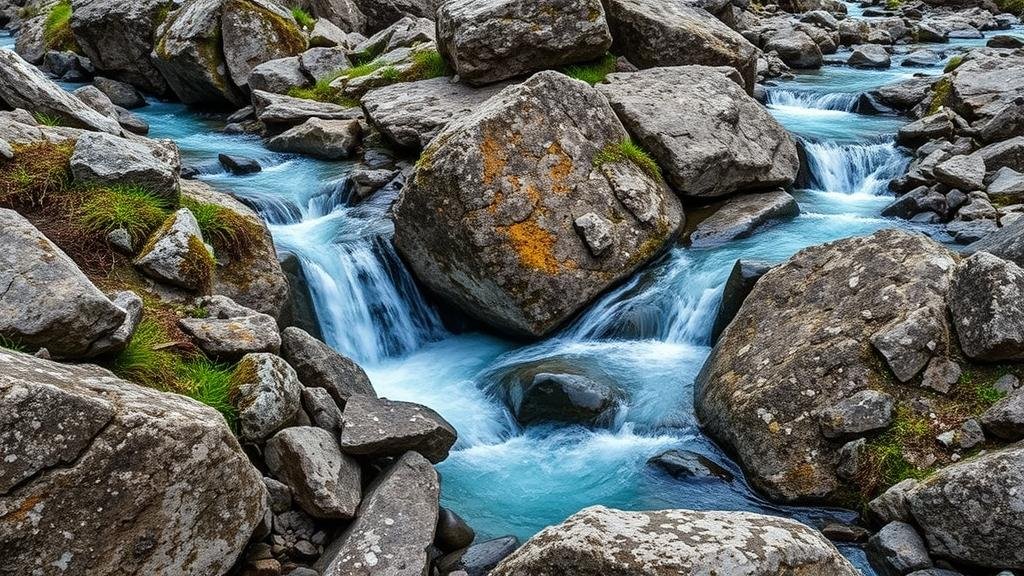Sapphire Streams: Searching for Nature’s Blue Jewels in Rugged Terrain
Sapphire Streams: Searching for Nature’s Blue Jewels in Rugged Terrain
Sapphires, one of the most coveted gemstones in the world, are not just found in opulent jewelers cases. They can be unearthed in the wild, particularly in streams that carve through rugged terrains. For rockhounds and mineral collectors, sapphire streams offer an exhilarating adventure, rich with the possibility of discovering these stunning blue gems. This article will explore how to locate these sapphire-rich areas, the geology behind sapphire formation, and practical tips for aspiring collectors.
The Geology of Sapphires
Sapphires are corundum minerals, primarily composed of aluminum oxide (Al2O3). Their vibrant blue color is the result of traces of iron and titanium incorporated into their crystalline structure. In nature, sapphires can be found in igneous and metamorphic rocks, particularly in areas where high-pressure conditions prevail during their formation.
Significantly, sapphires are often associated with river deposits. weathering processes of primary deposits, such as metamorphic rocks containing sapphires, lead to the transportation of gems downstream, where they accumulate in stream beds. Understanding the geology of an area can dramatically increase your chances of finding sapphires.
Identifying Sapphire Streams
When searching for sapphire streams, certain geological indicators can guide collectors to these gemstone treasures. Here are key features to look for:
- Proximity to Metamorphic Rock: Sapphires are commonly found in regions with metamorphic rock formations, such as schists and gneisses. Research local geology maps to identify these areas.
- Fluvial Deposits: Concentrations of sapphires are frequently found in river gravels. Investigate riverbanks and stream beds that have a history of erosion.
- Mineral Indicators: Look for other gemstones or minerals like garnets, which can indicate sapphire presence. The adjacency of these stones can signal the right environment.
Where to Search: Notable Regions
Several regions around the globe are renowned for their sapphire-bearing streams. Here are some highlighted locations:
- Montana, USA: The Yogo Sapphire, famous for its intense blue color, can be found in the Yogo Gulch area. Streams here are rich in sapphires.
- Australia: The gemstone-rich areas of Queensland, particularly around the Gemfields, attract miners and collectors due to their sapphire deposits.
- India: The Kashmir region produces some of the finest sapphires, and while mining is regulated, streams in less disturbed areas may yield gemstones.
The Process of Collecting Sapphires
Collecting sapphires requires both patience and technique. Here are actionable steps to enhance your prospecting efforts:
- Tools of the Trade: Equip yourself with basic tools such as a sieve or screen, shovel, and comfortable footwear for wading through streams. A rock hammer can also help break open larger stones.
- Timing: The best times to search are after heavy rainfalls or during spring thaw when streams are active and more washouts occur.
- Site Selection: Focus on bends or inside curves of the stream where eddies can trap heavier gemstones like sapphires.
Sorting Your Finds
After a rewarding day of collecting, sorting through your finds is essential. Look for the following characteristics to identify sapphires:
- Color: The most valuable sapphires exhibit a deep, rich blue color, often described as cornflower blue. Notable variations can also include yellow and pink hues.
- Clarity: Even small inclusions can affect value, so prioritize clear stones, though small or rough specimens can also be valuable to collectors.
- Cut and Shape: Initially, not all stones may exhibit a cut or shape conducive to jewelry. But, raw stones can still have market value and potential for lapidary work.
Legal Considerations and Ethical Collecting
Before embarking on your sapphire stream adventure, it’s crucial to understand local laws regarding mineral collection. Many regions require permits for gem mining and collecting, especially in protected lands. Ethical collecting not only preserves natural spaces but also maintains the longevity of sapphire populations for future collectors.
Conclusion: Shining a Light on Your Adventure
Searching for sapphires in rugged streams is more than just a hobby; it’s an exploration of nature’s hidden treasures, combining geology, adventure, and the thrill of discovery. By understanding the geological context, employing effective collecting techniques, and adhering to legal requirements, rockhounds can responsibly uncover these beautiful blue jewels. Secure your tools, research the best locations, and embark on your sapphire-hunting adventure today.



